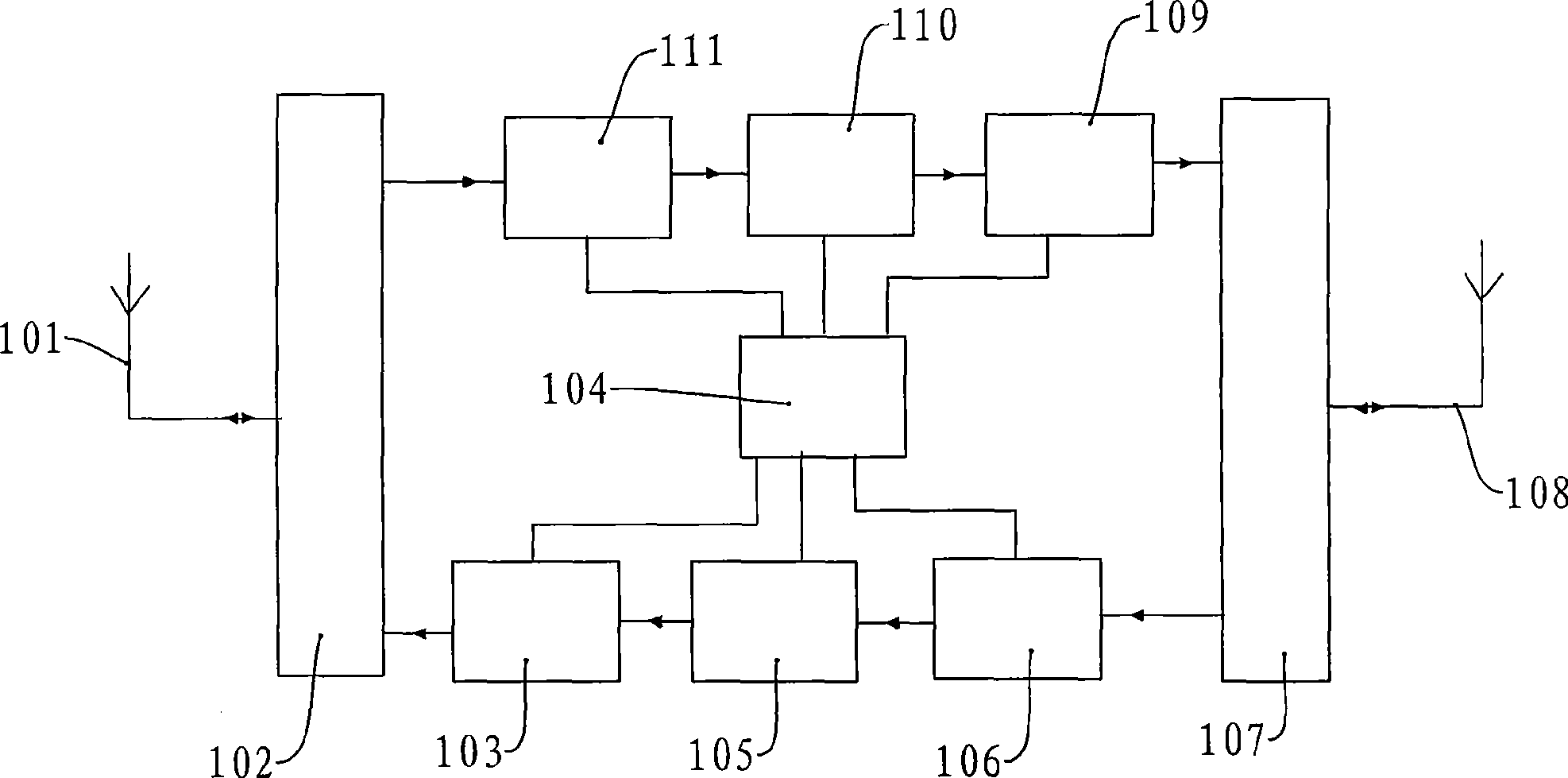Healing method for straight-forward station self-excitation
A repeater, self-excitation technology, applied in electrical components, wireless communication, network planning, etc., can solve problems such as affecting user calls, reducing the work gain of the repeater, and failing to completely solve the self-excitation problem of the repeater. achieve short-lasting effects
- Summary
- Abstract
- Description
- Claims
- Application Information
AI Technical Summary
Problems solved by technology
Method used
Image
Examples
Embodiment Construction
[0026] The self-healing method of repeater self-excitement of the present invention comprises following process:
[0027] 1) The process from self-excitation to steady state;
[0028] 2) The process of testing the normal state in the steady state;
[0029] 3) Self-excited trial process under normal state;
[0030] 4) Self-excited alarm synthesis reporting process.
[0031] For the sake of explanation, the parameters described below are annotated as follows:
[0032] a. MAX_ATT: the maximum attenuation value of the repeater;
[0033] b. OMT_ATT: the attenuation value set by the local monitoring center or remote monitoring center;
[0034] c. BST_ATT: Temporary attenuation value used in the self-healing process, the initial value is 9dB;
[0035] Detailed description of the four sub-processes:
[0036] 1) The process from self-excitation to steady state:
[0037] a. When the monitoring unit detects that there is still a self-excited alarm after a 3-minute confirmation pro...
PUM
 Login to View More
Login to View More Abstract
Description
Claims
Application Information
 Login to View More
Login to View More - R&D
- Intellectual Property
- Life Sciences
- Materials
- Tech Scout
- Unparalleled Data Quality
- Higher Quality Content
- 60% Fewer Hallucinations
Browse by: Latest US Patents, China's latest patents, Technical Efficacy Thesaurus, Application Domain, Technology Topic, Popular Technical Reports.
© 2025 PatSnap. All rights reserved.Legal|Privacy policy|Modern Slavery Act Transparency Statement|Sitemap|About US| Contact US: help@patsnap.com

